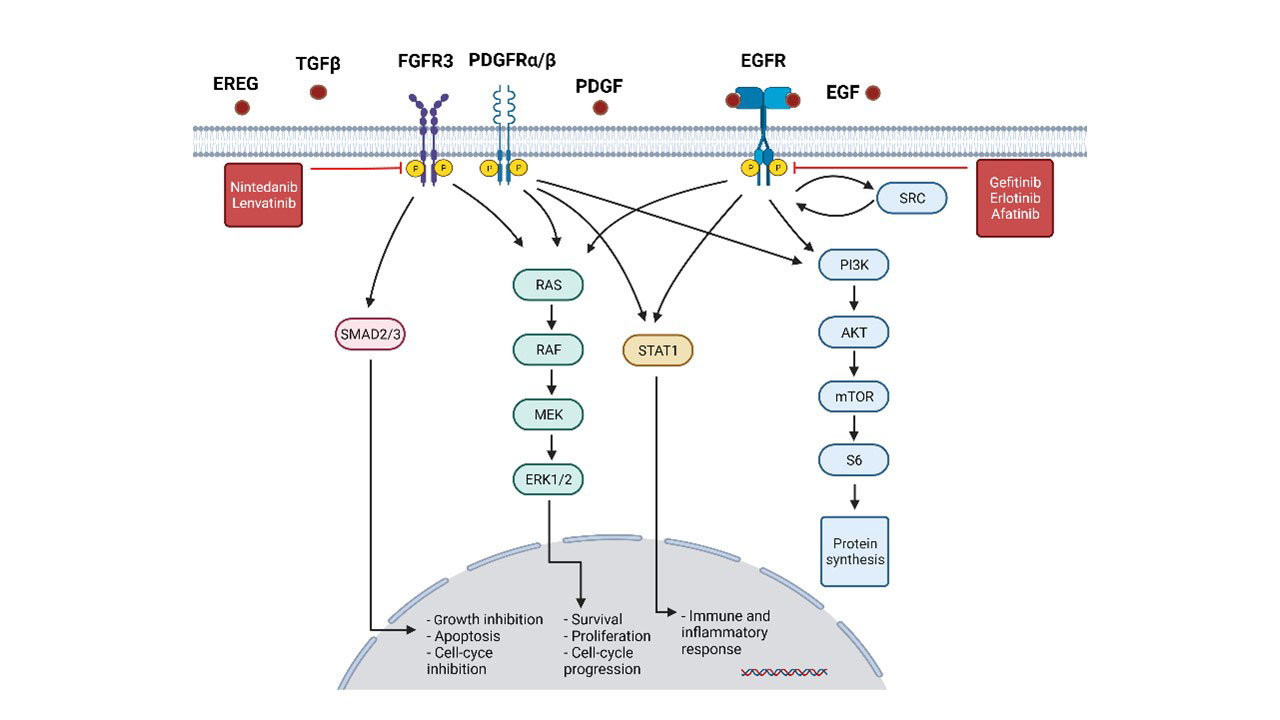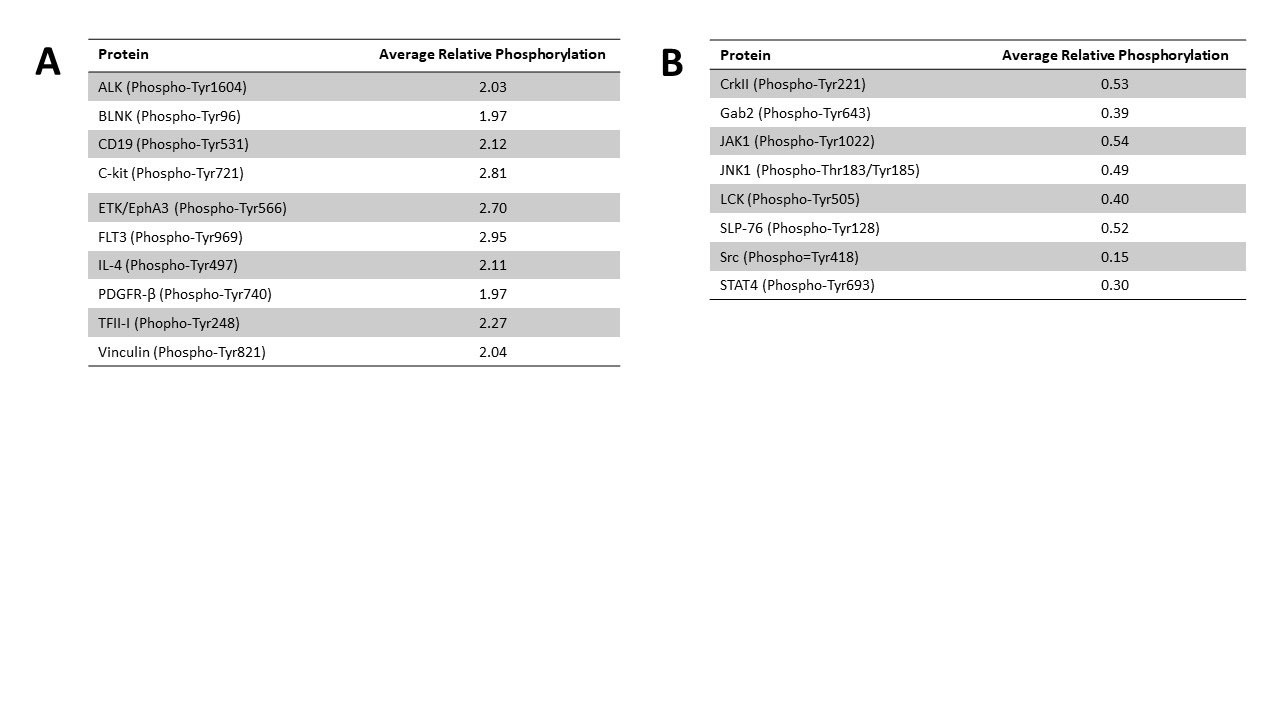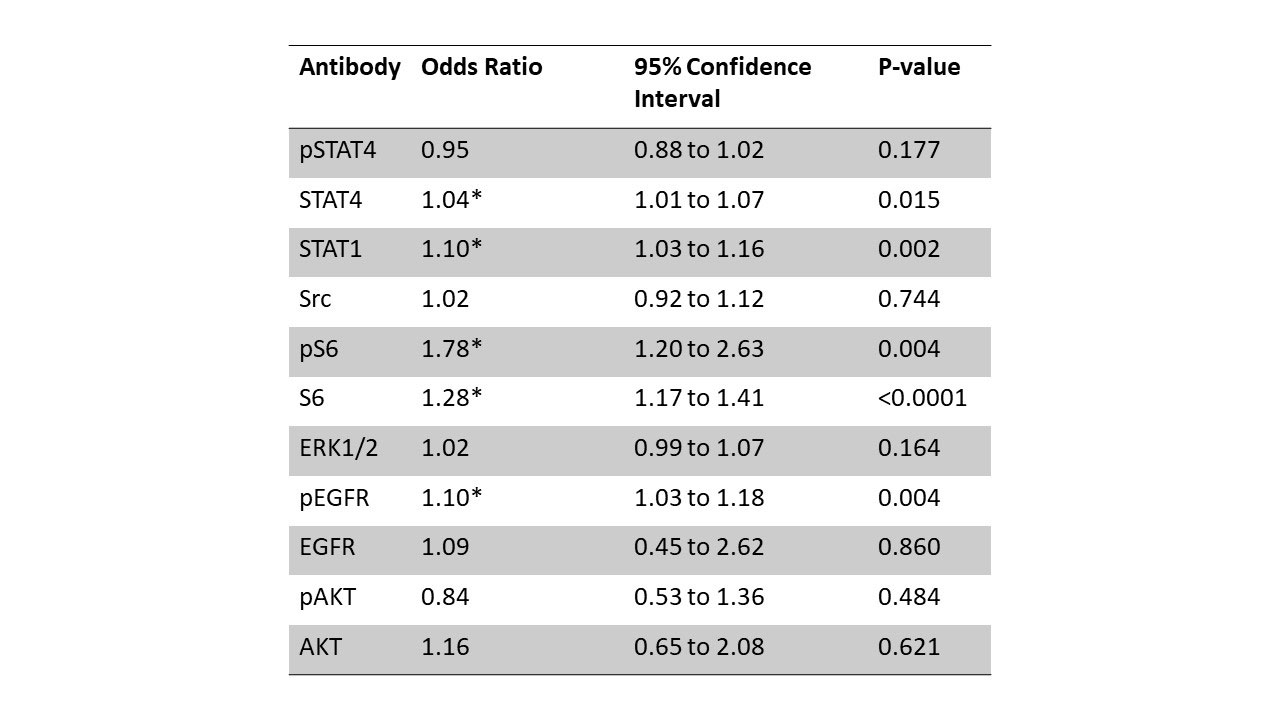Session Information
Date: Monday, November 14, 2022
Title: Systemic Sclerosis and Related Disorders – Clinical Poster III
Session Type: Poster Session D
Session Time: 1:00PM-3:00PM
Background/Purpose: Receptor tyrosine kinases (RTK) such as epidermal growth factor receptor (EGFR) and others including PDGFRs, FGFRs, and VEGFRs are implicated in systemic sclerosis (SSc) skin fibrosis. We previously identified a subpopulation of fibroblasts that express EGFR and drive SSc skin fibrosis in a multicellular circuit. This study sheds light upon molecular pathways downstream of RTK in fibroblasts that may be important in SSc skin disease.
Methods: Tyrosine phosphoarray analysis (ELISA-based array for 228 analytes; FullMoon Biosystems, Sunnyvale, CA) was conducted on fresh skin biopsies from three SSc patients and matched healthy controls (HC). Skin biopsies from 13 SSc patients and 18 HCs were subjected to immunohistochemical staining for EGFR, pEGFR and downstream targets including pSTAT4, STAT4, STAT1, SRC, pS6, S6, ERK1/2, pAKT and AKT (Fig.1). One blinded assessor counted positively stained, non-vascular, spindle-shaped (i.e. fibroblasts) dermal cells in 10 randomly chosen fields of view/slide at 40x magnification. A logistic regression model was developed where an increase in stained cells/field increases the likelihood a skin sample is from a SSc vs. HC subject.
Results: SSc vs. HC showed increased phosphorylation of EphA3, PDGFRb, C-kit, FLT3, BLNK, IL-4, Vinculin, TFII-1, CD19, and ALK and decreased phosphorylation of JAK1, SRC, SLP-76, CrkII, Gab2, JNK1, LCK, STAT4) as assessed by the phosphoarray (Fig.2). Immunohistochemical analysis demonstrated increased STAT4 (OR = 1.04), STAT1 (OR = 1.10), pS6 (OR = 1.78), S6 (OR = 1.28), and pEGFR (OR = 1.10) when compared with HC (Fig.3).
Conclusion: In addition to EGFR and PDGFR that have been shown to be important in SSc skin disease, the phosphoarray results newly identified elevated p-EphA3, an RTK expressed by fibroblasts with roles in various cancers and idiopathic pulmonary fibrosis, in SSc vs. HC skin. The mTOR and STAT1 pathways appear upregulated in SSc vs. HC skin. In the future, functional experiments will be conducted to further elucidate the involvement of specific RTKs and downstream pathways in SSc skin.
To cite this abstract in AMA style:
Bundschuh E, Fine R, Carnaru M, Kumar S, Wilson F, Williams A, Teaw S, Odell I, Hinchcliff M. An Exploratory Phosphoproteomic and Immunohistochemical Analysis of Receptor Tyrosine Kinases and Downstream Signaling Pathways in Systemic Sclerosis Skin [abstract]. Arthritis Rheumatol. 2022; 74 (suppl 9). https://acrabstracts.org/abstract/an-exploratory-phosphoproteomic-and-immunohistochemical-analysis-of-receptor-tyrosine-kinases-and-downstream-signaling-pathways-in-systemic-sclerosis-skin/. Accessed .« Back to ACR Convergence 2022
ACR Meeting Abstracts - https://acrabstracts.org/abstract/an-exploratory-phosphoproteomic-and-immunohistochemical-analysis-of-receptor-tyrosine-kinases-and-downstream-signaling-pathways-in-systemic-sclerosis-skin/



